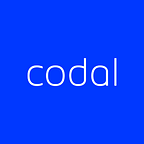Designing lead generation pages: A quick look into Codal’s process
Here at Codal, we specialize in building landing pages that convert website visitors into sales leads for our clients.
From working on a wide range of sites for organizations across all industries, we’ve constructed our own approach to designing high-converting landing pages — a process that leverages advanced tools, market research, and business data. And we’ve been refining this process now for more than a decade.
Let’s take a look at some general best practices when building out lead generation pages, as well as how Codal executes this type of project:
What are the key elements of a high-converting landing page?
Creating a page for lead generation may seem simple — you provide a form for the user to enter their contact information, then forward those details along to the sales team. But paying close attention to specific design elements can make all the difference when it comes to minimizing bounces and maximizing conversions.
Here are some of the most important ingredients to a successful lead generation page:
- Modern UX and UI design: Today’s users expect websites to have aesthetically pleasing, mobile responsive designs, with simple layouts and no distractions.
- Short and captivating copy: When there are too many words on a landing page, users often feel overwhelmed and bounce before filling out the form. The trick is to get your message across in a meaningful way — while keeping the page’s copy as concise as possible.
- Powerful CTAs: The call to action (CTA) is perhaps the most important element of a lead generation page. To drive conversions, the button should be strategically placed, sized, and colored — and its message should be clear and persuasive.
- Fast page loading time: When a landing page is loading, every one-second delay results in a 7% drop in conversions. There are many ways to increase page speed, from migrating to a superior hosting provider, to optimizing images, to leveraging a content distribution network.
- A straightforward lead form: Whether the user is requesting a product demo, signing up for an email newsletter, or making a purchase, the less information they have to provide, the better. Only provide fields for the information you absolutely need, like the user’s name and email address. Other details can be gathered at a later time.
- Compelling visual elements: Beautiful imagery and helpful visual content — like infographics and explainer videos — can help keep users engaged on the page, and ultimately increase conversions.
How Codal translates client needs into cutting-edge UX design
Every client has a different set of goals and requirements, meaning no two UX design strategies are the same. But after years of experience, we’ve established several core principles for launching a successful, high-converting landing page.
Here’s a general overview of our process, and the activities we prioritize each step of the way:
Kicking off the project and gathering requirements
Our first objective is to understand the client’s business, why they need this product, and what kind of users will be interacting with it. This involves:
- Meeting with stakeholders: Either in person or virtually, Codal kicks off the project with stakeholders and other relevant parties from the client-side. We learn about their existing processes, pain points, customer expectations, and how the landing page fits into a broader sales strategy.
- Creating user personas and a design brief: We learn about the different types of people who will be directed to the landing page. Then, we get into the specifics of each user persona, organized in a design brief. Who are they? What are they trying to accomplish? And how can we ensure those needs are met?
- Developing user stories: With an understanding of each users’ needs and expectations, we define user stories to help guide our design strategy. These stories are documented in a simple format: “User A wants X, so they can accomplish Y.”
Conducting in-depth research
Research plays a big role in every successful UX design strategy. In the initial discovery stage, our team conducts stakeholder interviews, reviews historical data, and draws inspiration from competitors.
What are the most successful brands in the space? And what do their lead generation pages look like? Based on what’s already out there, we can get a sense of what to include and exclude in our design, as well as any opportunities to stand out among the competition.
All of this research is compiled into a spreadsheet, which helps us establish a list of features and functionalities to prioritize in our design.
Performing Atomic UX exercises to refine project requirements
Before we jump into wireframing, we refine the project requirements through Atomix UX exercises. This involves running experiments, reviewing all of the facts and insights we’ve gathered so far, then turning them into realistic design opportunities.
The Atomic UX process enables us to highlight certain risks or opportunities that may have gone unnoticed in the research stage. Now, we are ready to start designing the landing page.
Maintaining constant communication and collaboration between teams
Throughout the design process, Codal hosts daily or weekly stand-up meetings — depending on the client’s preference.
During these meetings, we will track the overall progress of the project, review the most recent design iterations, perform product demos, and receive feedback from stakeholders. The designers then use this feedback to make adjustments and solidify priorities moving forward.
Internally, the UX team will collaborate with UI designers to gain a fresh perspective, come up with new ideas, and ultimately ensure that the product has an optimal look and feel.
Get started with Codal today
Our team has designed, developed, tested, launched, and supported lead generation pages for all kinds of organizations — from non-profits to clothing retailers. And these products have enabled our clients to sharpen their sales process, close more deals, and increase revenue for their business.
So if you want to generate more leads through advanced UX and UI design, reach out to Codal today!
